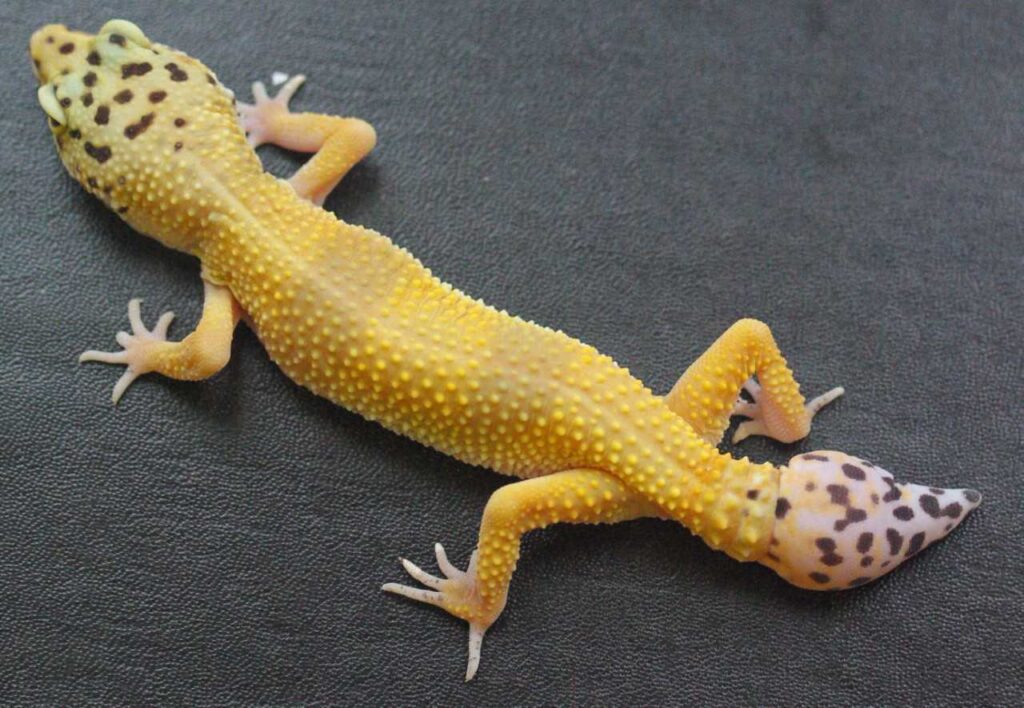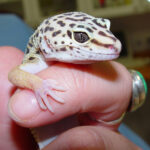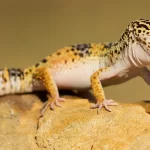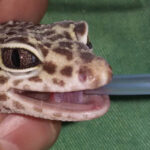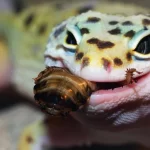Popular as house pets, leopard geckos are prized for their small size, easy maintenance, and placid dispositions. However, tail injuries are a problem that a lot of owners of leopard geckos encounter occasionally. The tail of a leopard gecko is readily broken off and frequently comes off after being handled aggressively or attacked by another gecko. A healthy leopard gecko won’t be harmed directly by a lost tail, but its quality of life may suffer. Thankfully, owners can take certain precautions to lessen the likelihood of tail loss and assist geckos as they heal. In this article we talk about Leopard Geckos Tail Injuries Causes and Remedies.
Reasons for Tail Loss and Injuries
The tail of a leopard gecko is used for balance and fat storage. It can also drop its tail by a process known as autotomy when it feels threatened. When it comes to pet leopard geckos, there are a few typical causes of tail injury and loss:
– Aggression from cagemates: Keeping several leopard geckos in one enclosure frequently results in fighting and bullying, particularly between the males. During a fight, one gecko may bite another, wounding their tail.
– Improper treatment: The skin and bones of leopard geckos are sensitive. A gecko’s tail can be readily damaged by grasping, squeezing, or dropping it. It is advisable to supervise small children when handling these lizards.
– Entrapment injuries: When a gecko tries to flee by getting its body or tail stuck on décor or openings in enclosures, it may injure its tail in the process. Make sure the hides and habitat have the right gaps and smooth edges to keep geckos out.
– Medical conditions: Over time, several diseases, such as metabolic bone disease, can weaken a leopard gecko’s bones and muscles, increasing the likelihood that its tail will come off from even minor trauma.
– Unknown causes: Sometimes tails come off for no apparent reason. Clues could include covert health issues or unreported confrontations between cagemates.
Assisting a Gecko with Tail Loss
A leopard gecko experiences worry when its tail is lost. Infection might also occur from the open wound. Recovery requires the right kind of treatment. Here’s how to help a gecko with a tail injury:
To separate the gecko, place it in a hygienic, unadorned hospital tank with a substrate made of paper towels and a hide if it has recently sustained a tail injury. This keeps dirt out of the wound and stops other inmates from bullying it.
Apply antibiotic ointment: After using a saline solution to carefully clean the lesion, apply a thin layer of antibiotic ointment that contains painkillers. Continue every day until the stump closes completely.
Encourage healthy eating so the gecko can rebuild its strength. Give it daily supplements of high-calcium powder and its favourite feeder insects to help restore bone. Until the gecko adjusts to changes in balance, it could require assistance obtaining prey.
Give it time to heal: A gecko tail stump needs four to six weeks to regenerate new tissue and scales. During this time, keep a close eye on the gecko and take it to an exotic veterinarian if the wound becomes infected.
Long-Term Support Following Tail Loss
A missing tail will ultimately grow back, but the gecko might be altered irreversibly. To provide the highest quality of life following tail loss, owners can put the following preventative measures into place:
– Pay attention to your weight: tailless geckos have a harder time storing fat. To keep it at a healthy weight, weigh it once a month and modify the quantity you feed it. Give underweight geckos waxworms or the insectivore supplement NutriBal.
– Reevaluate housing: A tailless gecko that has become vulnerable may be frequently targeted by bullying cagemates. It might require a permanent solo setup for security, along with more hides and greenery.
– Help with handling: To support balance concerns, cup both hands around the body of a tailless gecko and scoop it up. Keep an eye on small children and avoid falls. Put in low-level hiding and ramps.
– Take care of any associated health issues: If a gecko loses a lot of tail hair, have an exotic veterinarian examine it to look for any underlying conditions such as infection, parasites, or metabolic bone disease. Observe all guidelines for therapy.
Preventing Leopard Geckos’ Tail Injuries
When it comes to leopard gecko tails, prevention really is key to treatment. Owners can take the following preventative measures:
Make intelligent tankmate selections: Once they reach adult size, combine females only, or a male-female pair. Gently introduce new geckos by switching out their enclosures. Keep a sharp eye out for hostility.
Make the environment secure: Make sure that no holes or sharp edges allow body parts to get caught in the décor. Make use of substrates that won’t irritate wounds, such as paper towels. Take away anything that geckos can fall off or climb on.
Maintain good husbandry by adhering to the recommended care instructions for nutrition, UVB illumination, heating, and tank cleaning. This maintains the robust bones and muscles of geckos, keeping them active and healthy.
Handle carefully: A gecko should always be supported from bottom and moved slowly. Don’t tug on stuck geckos or grab their tails. Keep an eye on the kids and impart good technique.
Examine frequently: Every week or so, look for any indications of disease, damage, or weight loss in each gecko. A baseline makes it easier to identify minute changes that call for a veterinarian visit.
Owners of leopard geckos can prevent dangerous tail damage and ensure their pets flourish even after an inevitable loss by providing them with careful care and injury avoidance techniques. Be vigilant for warning indications of problems and take prompt action in the event of any aggressiveness or trauma. A happy, healthy gecko depends on you for protection and attention. I sincerely hope you find this “Leopard Geckos Tail Injuries Causes and Remedies” article helpful.

